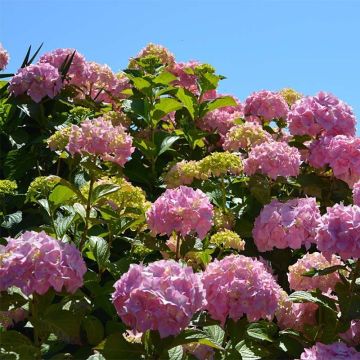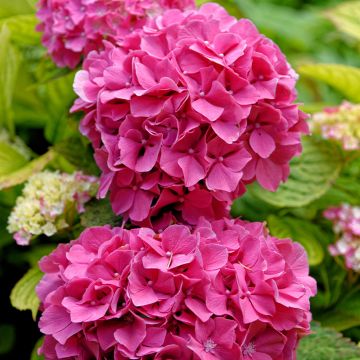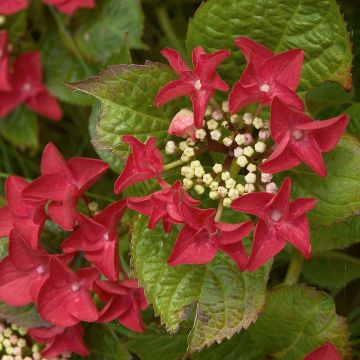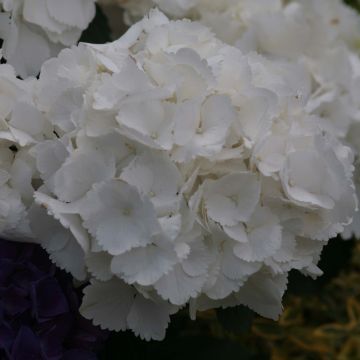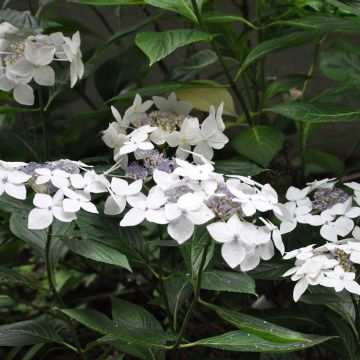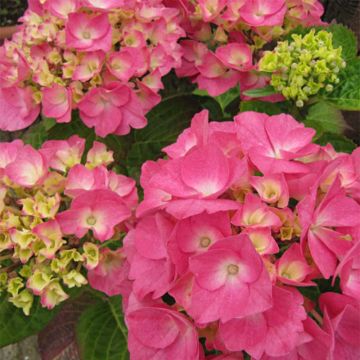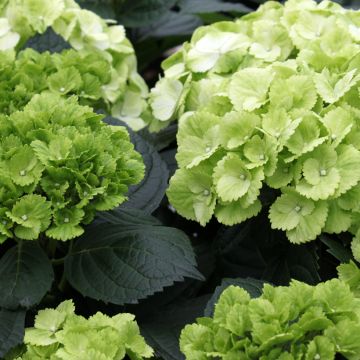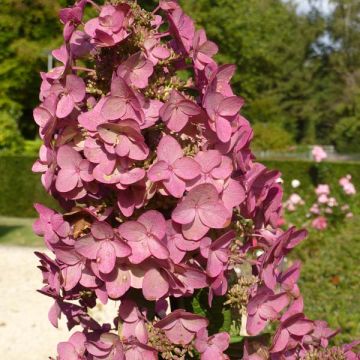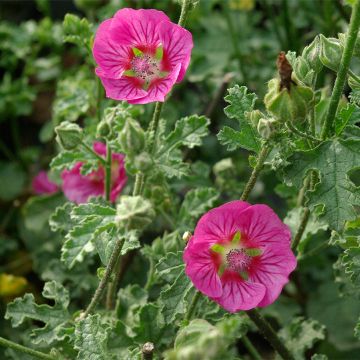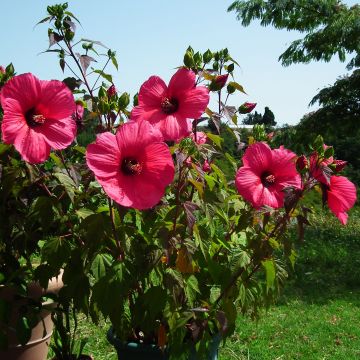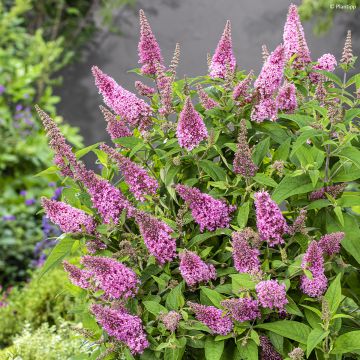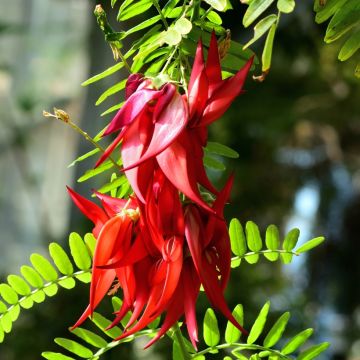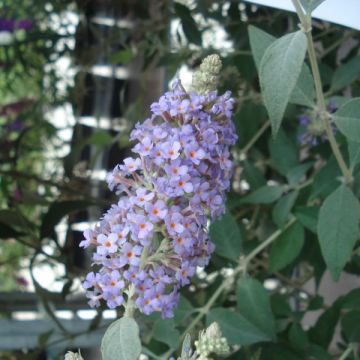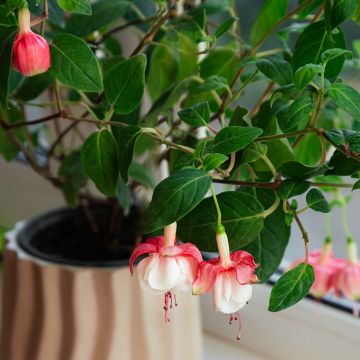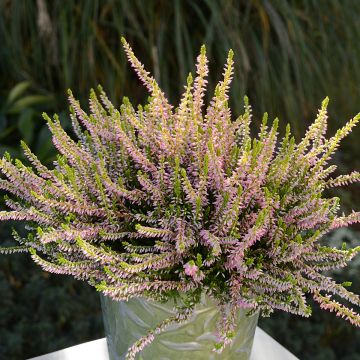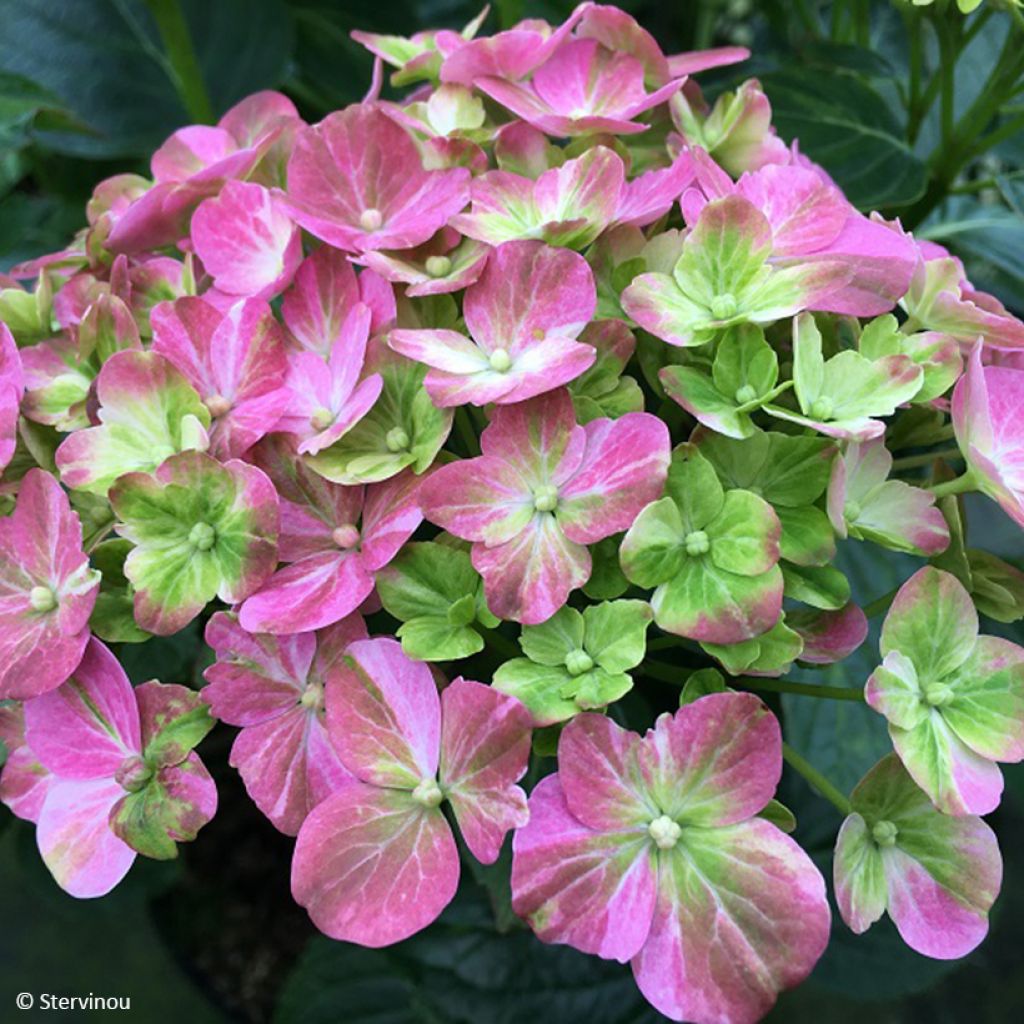

Hydrangea macrophylla Valvert
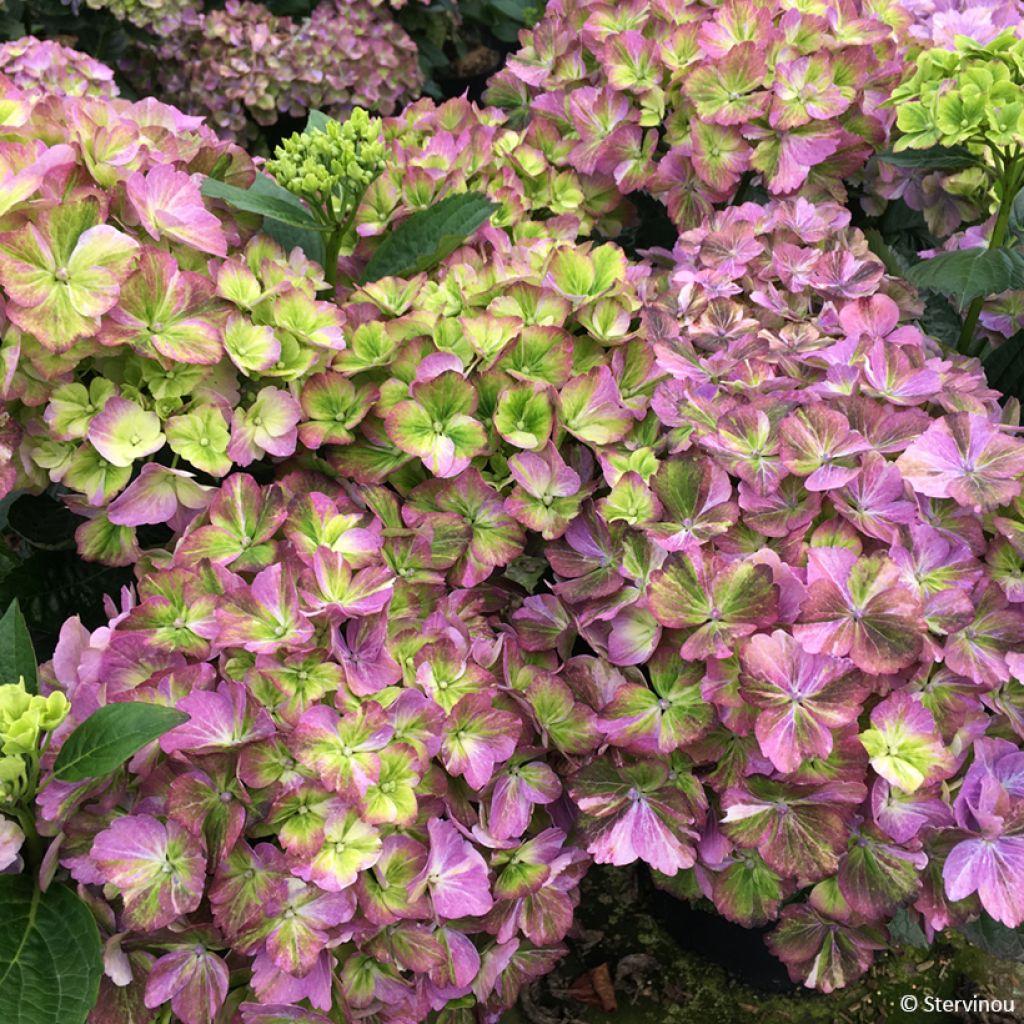

Hydrangea macrophylla Valvert
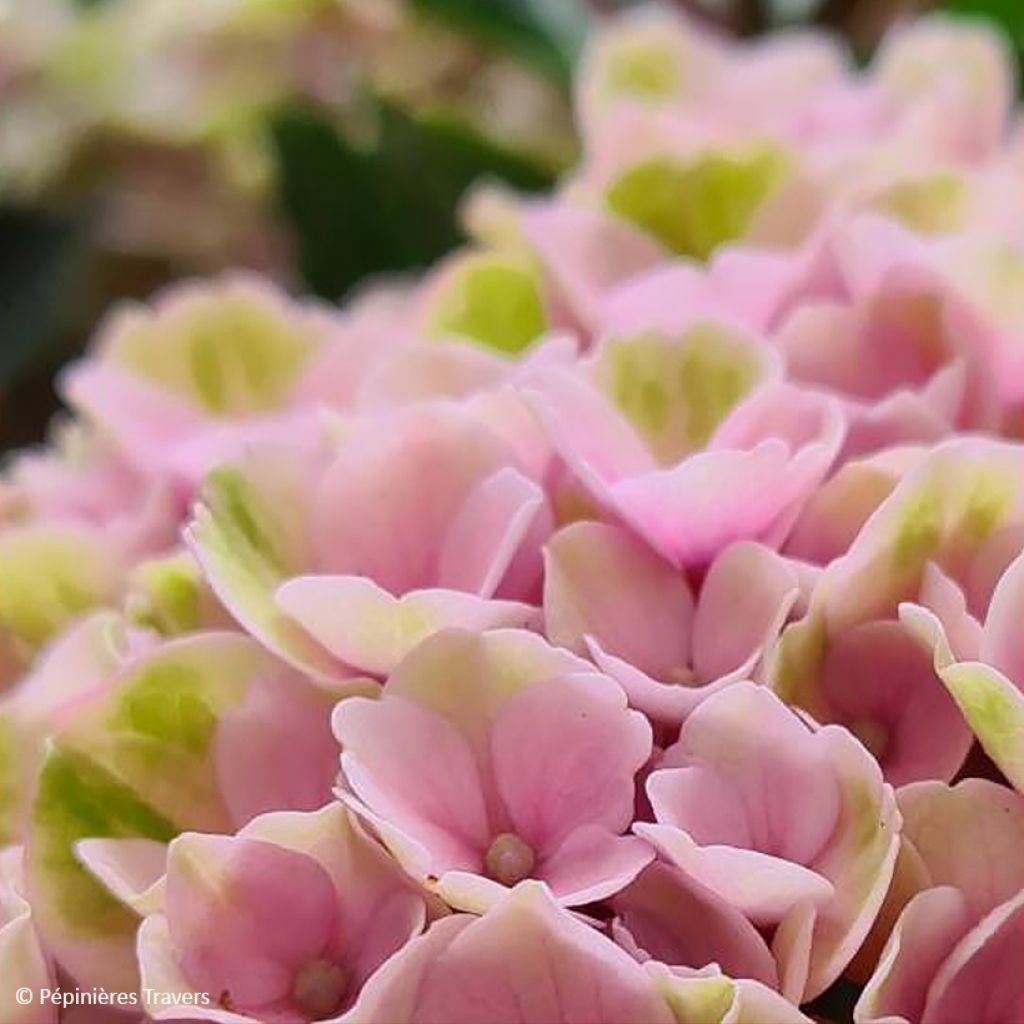

Hydrangea macrophylla Valvert
Hydrangea macrophylla Valvert
Hydrangea macrophylla Valvert
Bigleaf Hydrangea, French Hydrangea, Lacecap Hydrangea, Mophead Hydrangea, Penny Mac, Hortensia
This item cannot be shipped to the selected country
Delivery charge from €5.90
More information
Delivery charge from €5.90
More information
Schedule delivery date,
and select date in basket
This plant carries a 24 months recovery warranty
More information
We guarantee the quality of our plants for a full growing cycle, and will replace at our expense any plant that fails to recover under normal climatic and planting conditions.
From €5.90 for pickup delivery and €6.90 for home delivery
Express home delivery from €8.90.
Does this plant fit my garden?
Set up your Plantfit profile →
Description
Hydrangea macrophylla 'Valvert' is a hydrangea with large heads that is truly original due to its colours changing throughout the weeks. This compact bush has dark green deciduous foliage, which forms a perfect backdrop to showcase the large flower balls. The green flower buds open to florets of the same shade, then streaked with pink before turning red at the end of the season. The dried flowers can then be used to create magnificent compositions for the house. It will thrive in partially shaded positions in non-chalky, moist soil and can also be grown in a container on a terrace.
Hydrangeas belong to the Hydrangeaceae family which includes 17 genera, some well-known ones like Deutzia and Philadelphus (Mock Orange), and others like Kirengeshoma that are less common... Hydrangea macrophylla is the most widespread cultivated species with numerous horticultural varieties, as this plant native to Japan inspires breeders worldwide.
'Valvert' is a recent French variety, created by Jean-Paul Davasse from the Boos Nurseries near Angers. Hydrangea is to Angers what Camellia is to Nantes, to the extent that 25% of European production is concentrated within a 30 km radius of this city. Hydrangea 'Valvert' has a dense and fairly compact growth, reaching a maximum height of 1 to 1.20 metres with a width of 0.80 to 1 metre when fully grown. This moderate growth allows it to be easily grown in a container to enhance a patio or terrace, especially since it can be pruned if necessary. The upright branches bear large ovate leaves, about ten centimetres long, with coarsely toothed edges. The surface of the leaves is dark green and slightly shiny with clearly visible veins, providing a beautiful contrast to the lighter flowers. These appear in July and bloom until September, sometimes October, making the Hydrangea one of the best flowering shrubs for summer. The green flower buds open to large inflorescences measuring about fifteen centimetres in diameter, consisting of coloured sterile florets. Initially green, they then display pink or purplish streaks in alkaline soil, while in acidic soil, the green will mix with blue. These different shades coexist as new inflorescences open, creating a constantly changing spectacle. At the end of the season, the flowers turn lighter or darker red, beautifully heralding the arrival of autumn.
'Valvert' is easy to grow in a container and can thrive in the morning sun, but should be protected from the intense midday sun. Ideally, it will be planted in a partially shaded flower bed, alongside other plants with similar needs. Although it dislikes limestone, it is not strictly a plant for acidic soil. You can create a magnificent composition by planting it at the base of an Acer conspicuum 'Red Flamingo', one of the most spectacular snake bark maples. Not only is its bark extremely ornamental but its green, cream, and red foliage contrasts with the bright red petioles and young shoots. Fuchsia magellanica 'Arauco' will also be a good companion, with its long summer flowering period that accompanies your Hydrangea, while contrasting with its radically different appearance. Its tricoloured bell-shaped, white, pink, and purple flowers, with slender petals, sway with the slightest breeze, bringing life to your arrangement. An autumn Camellia, like Camellia sasanqua 'Belinda' with its charming semi-double flowers in pink with a golden centre, will extend the flowering season.
Plant habit
Flowering
Foliage
Botanical data
Hydrangea
macrophylla
Valvert
Hydrangeaceae
Bigleaf Hydrangea, French Hydrangea, Lacecap Hydrangea, Mophead Hydrangea, Penny Mac, Hortensia
Cultivar or hybrid
Other Hydrangea Macrophylla
Planting and care
Plant the 'Valvert' macrophylla hydrangea in spring or early autumn, preferably in a slightly shaded position, for example against an east-facing, west-facing, or even north-facing wall. It tolerates the sun, but only in the morning. Protect it from cold and drying winds. It does not require ericaceous soil but appreciates deep, moist, well-drained, fairly fertile soil, possibly enriched with a good base fertiliser before planting. If the soil is dry at the base of the wall, place the root ball at least 30-40 cm away and incorporate a quantity of well-decomposed compost to better retain moisture in the soil. It is very hardy and can be planted in cold regions without worry. Remove faded flowers on the first bud or the pair of buds directly below and cut back a quarter or a third of the oldest stems at the base, when the plant is mature, to promote the formation of new shoots every year during March and April.
Planting period
Intended location
Care
This item has not been reviewed yet - be the first to leave a review about it.
Summer-flowering shrubs
Haven't found what you were looking for?
Hardiness is the lowest winter temperature a plant can endure without suffering serious damage or even dying. However, hardiness is affected by location (a sheltered area, such as a patio), protection (winter cover) and soil type (hardiness is improved by well-drained soil).

Photo Sharing Terms & Conditions
In order to encourage gardeners to interact and share their experiences, Promesse de fleurs offers various media enabling content to be uploaded onto its Site - in particular via the ‘Photo sharing’ module.
The User agrees to refrain from:
- Posting any content that is illegal, prejudicial, insulting, racist, inciteful to hatred, revisionist, contrary to public decency, that infringes on privacy or on the privacy rights of third parties, in particular the publicity rights of persons and goods, intellectual property rights, or the right to privacy.
- Submitting content on behalf of a third party;
- Impersonate the identity of a third party and/or publish any personal information about a third party;
In general, the User undertakes to refrain from any unethical behaviour.
All Content (in particular text, comments, files, images, photos, videos, creative works, etc.), which may be subject to property or intellectual property rights, image or other private rights, shall remain the property of the User, subject to the limited rights granted by the terms of the licence granted by Promesse de fleurs as stated below. Users are at liberty to publish or not to publish such Content on the Site, notably via the ‘Photo Sharing’ facility, and accept that this Content shall be made public and freely accessible, notably on the Internet.
Users further acknowledge, undertake to have ,and guarantee that they hold all necessary rights and permissions to publish such material on the Site, in particular with regard to the legislation in force pertaining to any privacy, property, intellectual property, image, or contractual rights, or rights of any other nature. By publishing such Content on the Site, Users acknowledge accepting full liability as publishers of the Content within the meaning of the law, and grant Promesse de fleurs, free of charge, an inclusive, worldwide licence for the said Content for the entire duration of its publication, including all reproduction, representation, up/downloading, displaying, performing, transmission, and storage rights.
Users also grant permission for their name to be linked to the Content and accept that this link may not always be made available.
By engaging in posting material, Users consent to their Content becoming automatically accessible on the Internet, in particular on other sites and/or blogs and/or web pages of the Promesse de fleurs site, including in particular social pages and the Promesse de fleurs catalogue.
Users may secure the removal of entrusted content free of charge by issuing a simple request via our contact form.


































